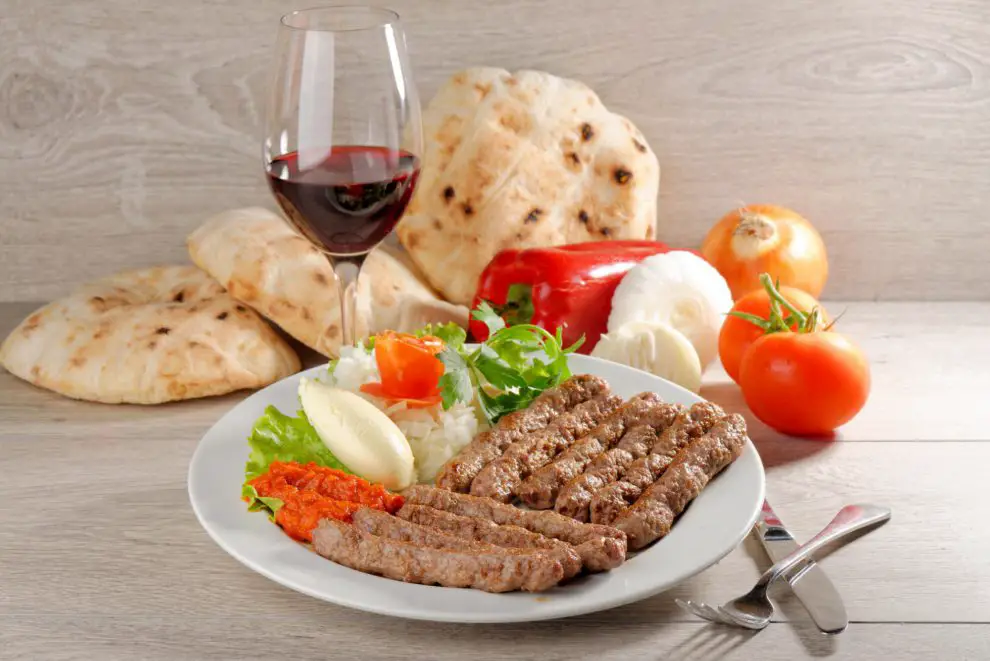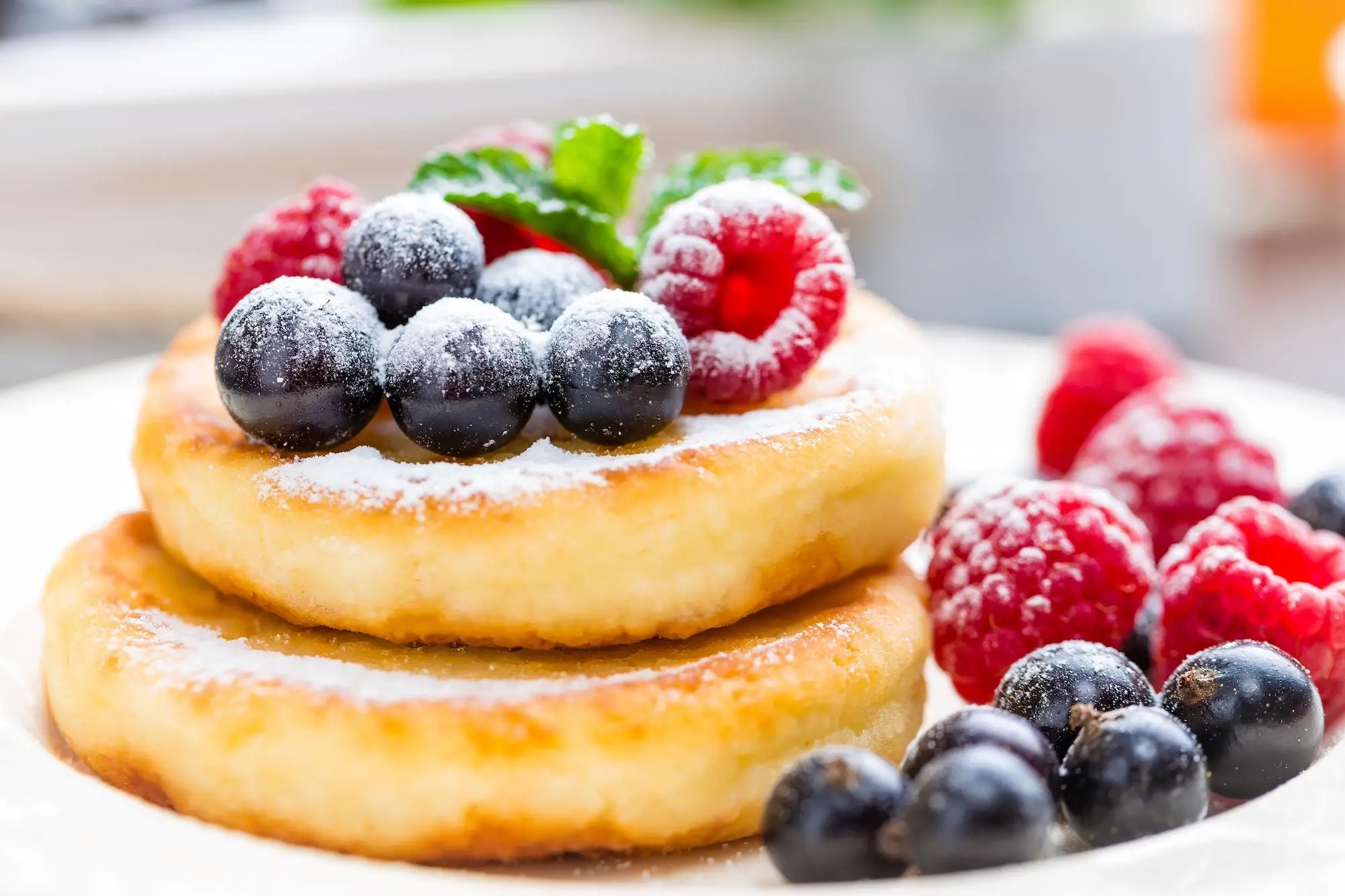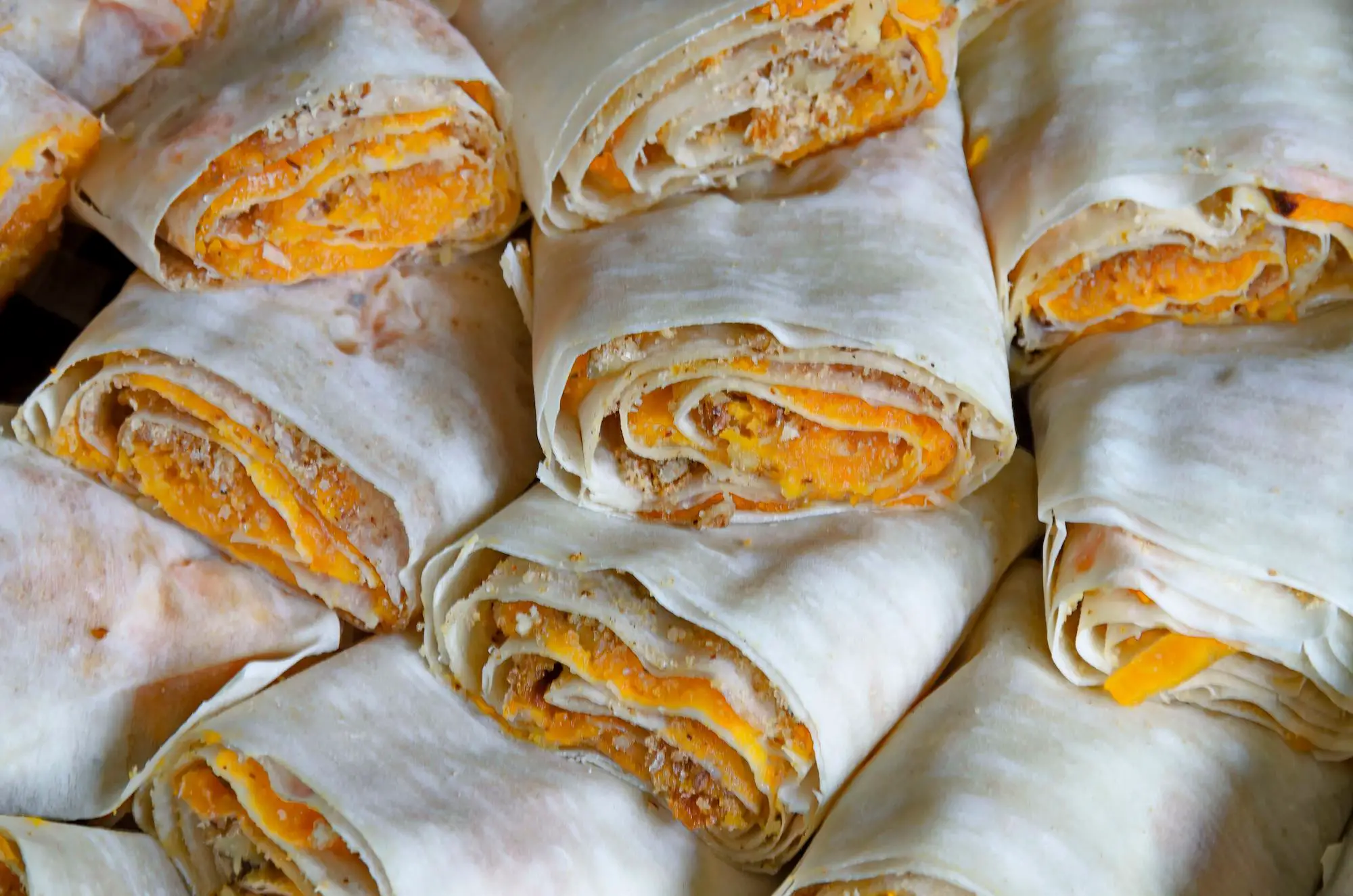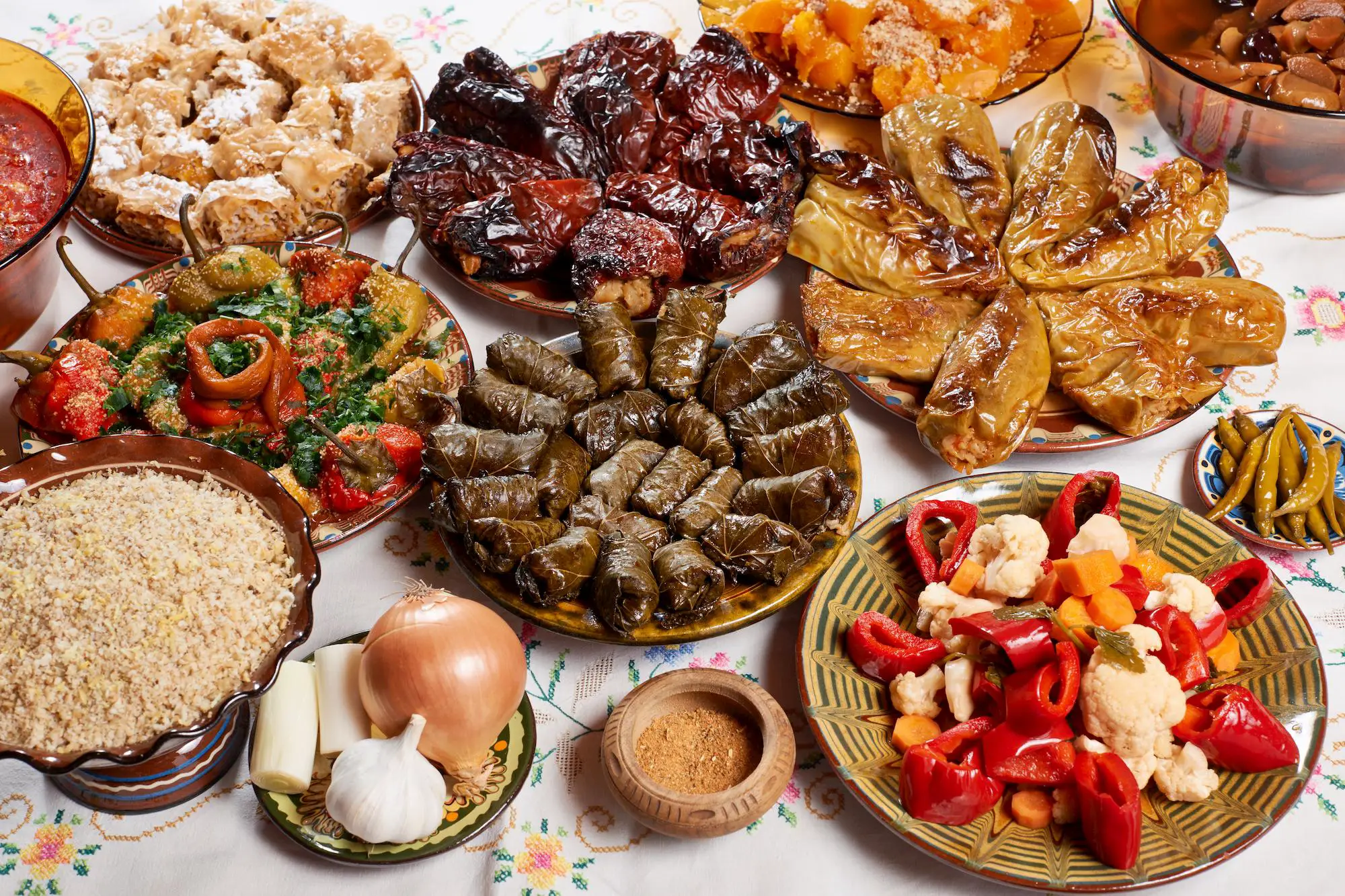Serbia or Srbija is located in Southeast Europe. It is bordered by Hungary, Croatia, and Bosnia to the west, Romania and Bulgaria to the east and Macedonia, Albania and Montenegro to the south.
As a territory, Srbija is a mountainous region, full of forests, meadows, pastures, rivers and lakes. The natural treasure of this country is also reflected in the abundance of naturals reserves, rocky caves as well as mineral and thermal springs.
The geographic position of Serbia, especially regarding the valley of the Morava river which is running between the western and the eastern part of the region, has resulted in rich history as a path from continental Europe to Greece and Anatolia.
The historical occurrences influenced Serbian cuisine as well and it can be said that Arabic, Turkish, and Astro- Hungarian cuisines are those which had the greatest impact on Serbian culinary tradition. A great number of today’s recipes are inspired or modified by these dominant gastronomic empires.
Today, as a contrast to the newly-“banished” ingredients and food preparations in Western Europe, Serbian people consume dishes based on meat, spices, animal fat, and pastries, topped with homemade hard liquor or desserts that are prepared with a generous amount of walnuts, eggs, and butter. A sanctuary for the real hedonists!
Here is a list of 20 Serbian traditional foods that you must try:
Table of Contents
1. Burek sa sirom
Burek is one of the staple pie-like pastries on the Balkans. This extremely greasy, yet incredibly tasty, pie originates from Turkey. The burek was introduced in Serbia around the 15th century as a round cheese pie. An interesting fact is that “burek sa sirom” is a dish that can be ordered mainly in Serbia, Croatia and North Macedonia.
Other Balkan countries have a different approach in the preparation and nomination of this dish. If you order “burek” in Bosnia and Herzegovina you will get meat pie, while the cheese version is called “sirnica”. They also cut it and prepare it differently. Croatians, on the other hand, sometimes roll the burek into a coil (this depends on the baker’s preferences). Most importantly, burek is breakfast food to enjoy, especially when paired with a glass of yogurt.
2. Pljeskavica
Pljeskavica is one of the main meat dishes in Serbian cuisines which is actually the Balkan version of the American hamburger.
This delicious meat dish is made of minced pork, veal, and beef seasoned with salt, pepper, and paprika but minced garlic and onion are also added.
Though a simple recipe, the dish is quite hard to master to the level of excellence, therefore if you go to Serbia, people will recommend you exactly where to go and taste the “real thing” when it comes to pljeskavica.
After the minced meat mixture is turned into a meat patty, it is grilled, topped with “kajmak”- a fatty, delicious clotted cream cheese and then finally tucked into a rustic flatbread called “lepinja” [1].
3. Cevapi
The cevapi are a real “must| when it comes to trying best food specialties not only in Serbia but also everywhere on the Balkans.
They are short meaty cylinders made of minced meat- beef, pork, lamb, veal, mutton- depending on region and preference. After being seasoned with salt, pepper, and a bit of smoked paprika they are grilled and then served with pita bread and freshly chopped onions on the side.
4. Leskovachka muchkalica
Leskovachka muchkalica is traditional Serbian food who has earned its name from its place of origin- the city Leskovac in southern Serbia. It is a meat dish that contains a wide range of ingredients such as pork curs, bacon, roasted paprika, tomatoes, onions, garlic and chili peppers.
Most often, the preparation of this dish means recycling of barbecue leftovers that are combined, simmered and then seasoned with salt and pepper. Leskovachka muchkalica is served warm as a main dish with a piece of homemade wheat bread and a fresh salad on the side.
5. Srpska salata
When considering food in Serbia, any dish means nothing without a salad as a starter, paired with a cold shot of rakia.
Srpska salata is a salad prepared with freshly square-cut cucumbers, tomatoes, onions and peppers (raw or roasted). The vegetables are mixed together and then seasoned with oil and salt. Sprska salata is often compared to the so-called “shopska salad” which contains the same combination of vegetables apart from the paprika and it is and topped with white Balkan cheese (cow or sheep).
6. Reform torta
A mouthwatering, amazing dessert! Reform torta is a Serbian cake consisting of sponge layers made of egg whites, sugar, bread crumbs and walnuts covered with a filling full of butter, melted chocolate, egg yolks and sugar.
The top of the Reform torta is frosted with the same filling and then sprinkled with chopper or ground walnuts.
This is one of the most popular cakes in Serbia that is almost always served on festive occasions and celebrations.
7. Slatko od dunja
If you visit a Serbian home, it is very likely to be welcomed with a cup of strong Turkish coffee and “slatko”- a traditional preserve that is prepared with whole, diced or grated fruit such as quince, apricot, strawberry or fig.
The method f preparation is quite simple- the fruit is cooked in water, sugar, and lemon juice until it gets the texture of marmalade. “Slatko” is stored in glass jars.
The “slatko od dunja” is a fragrant preserve made of quince, often enriched with vanilla or cinnamon or lemon zest and chunks of walnuts. Most commonly, it is served as a sweet after-meal snack along with coffee or local brandy.
8. Sarma
Sarma is one of the many Serbian foods that originate from Turkey, i.e. Ottoman Empire. It is present in the cuisines in other countries in the Balkan region and prepared in numerous versions. However, the basic staple recipe of these vegetable rolls is sauerkraut or vine leaves (depending on the season- summer or winter) filled with a mixture of minced meat, rice or bulgur, red paprika, tomato sauce, and onions. Leaf-rolls are formed and then cooked in the oven for 4-5 hours.
When made with vine leaves, the sarma is served with a generous amount of sour milk on the side and a piece of fresh homemade bread while the winter sauerkraut version is usually paired with a piece of bread and a glass of red, dry wine.
9. Proja
Proja is one of the most favored Serbian dishes for breakfast, as a snack or a side dish.
It is basically cornbread made of cornmeal, salt, milk, beaten eggs and oil or butter. These ingredients are mixed altogether and then the batter is baked in the oven until its edges are formed into a golden crust.
This pastry has quite a dry texture, therefore it is always served with either sour milk, pavlaka (smetana), fresh tomatoes or a glass of yogurt.
10. Pasulj
Pasulj is a delicious Serbian bean soup that is commonly served as a main dish. It is made with white beans, vegetables such as onions, garlic. and carrots and according to its best recipe, it is seasoned with bay leaves or mint and then cooked for hours until beans become soft. Next, the soup is seasoned with salt, oil, and red paprika powder. Before the end of the preparation, dry meat cuts, nacon or sausage is added.
Pasulj is a very popular dish is the Balkans . It is a really tasty comfort meal that it’s usually served with a piece of homemade wheat bread on the side.
11. Zlatiborska prshuta
Zlatiborska prshuta is a traditional smoked ham that originates from Zlatibor- a montanious region in the western part of Serbia.
Zlatiborska prshuta is made with an ancient method of preparation and preservation, A piece of high-quality pork or beef is salted and then air-dried or cold- smoked with beech wood for a month. The pleasant climate in the region, as well as the wood for smoking, provide the distinctive flavor of the meat.
Zlatiborska prshuta is thinly sliced and then served as mezze food along traditional Balkan cheese, dry fruits and a dose of wine or rakia.
12. Slatko od smokve
Slatko od smokve is one of the many tasty Serbian fruit preserves. It is made of ripe figs “smokve” that are washed, cleaned, and boiled with a generous amount of sugar. Next, lemon juice and lemon slices are added to add flavor and prevent crystalization. Finally, after being cooked, the preserve is let to cool and stored in glass jars.
Usually, slatko od smokve contains whole figs though sometimes it is also made with figs cut in halves and some versions even add chopped walnuts in the jars before storing.
13. Pazarske mantije
An insanely tasty traditional Serbian dish whose flavor, filling and texture resemble the popular “burek” although the shape and the size is different. Pazarske mantije are made of white flour dough which is stretched and stuffed with a filling made of fried chopped onion, ground beef, salt, black peppers and oil.
The tiny sphere-shaped pastries are arranged in a round baking pan and then baked together in the oven. Traditionally, pazarske mantije are baked in ould furnaces which can be found even today in some parts of the countryside. The furnaces give this pastry special aroma and taste.
This dish is usually served as breakfast food while still hot and always paired with yogurt that is poured over them or just consumed on the side.
14. Leskovachki voz
The name of this dish has quite a humorous note since it literally means “a train from Leskovac”. Leskovachki voz is a delicious combination of grilled meat that is served in generous quantities and usually shared with a group of friends or family along beer or wine.
The name actually refers to the fact that apart from the meat a variety of fresh salads, as well as baked beans and flatbread, are served so the so-called “food train” keeps on going as the waiter keeps on serving dish after dish on the table and this ends only when you say “stop” or “enough”.
15. Bundevara
Bundevara is a fragrant, super-delicious pumpkin pie that is traditionally prepared in Serbia but also in other parts of the Balkans. This pie is made of an exquisitely thin phyllo dough that is stretched in sheets which are covered with a feeling of grated pumpkin, sugar, vanilla, cinnamon and nutmeg. Some versions include raisins or/ and chopped walnuts. The bundevara can be served hot or cold for breakfast or as a snack topped with powdered sugar.
16. Bela chorba
Bela chorba is a chicken soup made of chicken breasts which in Serbia are referred to as “white meat”, carrots, potatoes, onions, parsley, eggs, some oil, salt, and pepper. Traditionally, bela chorba is served as a main course in the winter or as a starter in the summer due to scorchingly hot Balkan weather.
As a main course, bela chorba is usually served with a piece of wheat bread on the side and a fresh salad seasoned with only oil, salt and vinegar (cucumbers or cabbage).
According to some theories, bela chorba also effectively heals hangover when white vinegar is added and thus transformed into a sour soup.
17. Pirotska peglana kobasica
Pirotska peglana kobasica is sausage made of meat of older animals such as goats donkeys, beef or sheep. The name of this dish literally means “ironed sausage” and it refers to the unusual flat shape of the sausage.
The flavoring added in this meat dish is made of a variety of spices such as garlic, dried parsley or thyme, crushed pepper, spicy paprika, and sometimes even dried leek. There are several versions of pirotska peglana kobasica that you may find in Serbia, however, every recipe includes a spice to enhance the hot flavor that is the staple of this meat preparation.
18. Vasina torta
Vasina torta goes hand in hand with Reform torta when it comes to dessert choice and preparation for festive occasions in Serbia. It is a real classic adored by almost any sweet tooth on the Balkans as it is simple, tasty and decorative.
Vasina torta is made of a sponge cake full of ground walnuts, covered with a filling made of butter, oranges, melted chocolate and walnuts. Next, the filling is covered with what is known as shaum- a meringue made of egg whites and sugar before being topped with chocolate.
Vasina torta was first introduced in Serbia at the beginning of the 20th century when a rather opulent family of merchants brought and modified a cake recipe from Vienna, at a time when oranges were considered a valuable treasury in Serbia.
19. Pindzur
This dish is a typical traditional Balkan mezze food or spread that apart from Srbija can be found in Croatia, North Macedonia, Albania and Bosnian cuisine. It is often compared to the popular red paprika spread “ajvar” though the pindzur is lighter and milder as the vegetables are roasted, mashed and then seasoned with salt and oil. Bell peppers, tomatoes, eggplants, and garlic make the combination of this dish that can be served as a starter with white Balkan cheese on the side and a shot of rakia (Balkan plum grappa).
20. Gibanica
Gibanica is a pastry that that is common not only in Serbia but also Macedonia and Croatia. This pie-like pastry is mad of thin layered phyllo or yeast dough that is filled with a creamy batter made of eggs and cottage or any kind of white Balkan cheese.
The other name of gibanica is “guzhvara” which means “wrinkled” as the method of preparation includes wrinkling of the dough layers. The pie is baked in a deep casserole-like pot and its taste can vary according to preference- salty with cheese and eggs (sometimes even spinach is added) or sweet with ground apples or pumpkin.
In Serbia, gibanica is usually served as breakfast alongside a glass of yogurt but it can be also a cold appetizer or a hearty snack.













